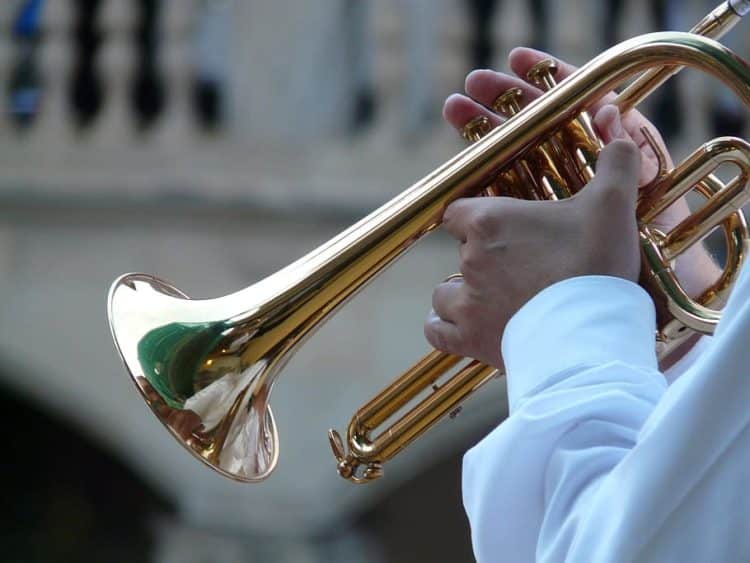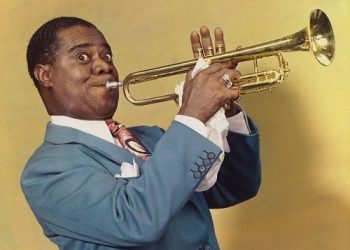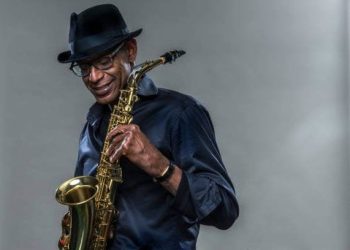Trumpet players occupy a revered place in the tapestry of musical history, their vibrant and resonant tones echoing across genres and generations. At the forefront stands Louis Armstrong, a pioneer of jazz whose improvisational brilliance and gravelly voice shaped the very essence of the genre. Miles Davis, a visionary trumpeter and composer, traversed the realms of cool jazz, modal, and fusion, leaving an indelible mark on the evolution of contemporary music. Dizzy Gillespie, with his trademark bent trumpet bell and charismatic persona, co-founded the bebop movement alongside Charlie Parker, ushering in a new era of intricate harmonies and rapid tempos.
Chet Baker’s lyrical cool jazz, Clifford Brown’s dazzling hard bop, and Freddie Hubbard’s versatile mastery contributed to the trumpet’s diverse vocabulary. Lee Morgan’s soulful expressions and Wynton Marsalis’s commitment to jazz preservation showcase the instrument’s enduring relevance. These trumpeters, each with a unique voice, have not only shaped the soundscape of jazz but also influenced the broader spectrum of music. From smoky jazz clubs to grand concert halls, the trumpet’s timbre continues to captivate audiences, embodying the spirit of innovation and emotional resonance that defines the artistry of trumpet players.
1. Woody Shaw
Woody Shaw, born on December 24, 1944, in Laurinburg, North Carolina, was an influential American jazz trumpeter, composer, and bandleader. Renowned for his virtuosic and innovative approach to the trumpet, Shaw played a crucial role in the post-bop and avant-garde jazz movements.
Woody Shaw’s career began to gain attention in the 1960s when he worked with prominent musicians such as Eric Dolphy, Horace Silver, and Art Blakey’s Jazz Messengers. His technical command of the trumpet, combined with his inventive improvisational style, set him apart as a rising star in the jazz world.
In the 1970s, Woody Shaw became a member of the Max Roach Quartet and later formed his own groups, where he continued to push the boundaries of jazz. His compositions and arrangements showcased a fusion of post-bop, modal jazz, and avant-garde elements. Albums like “Rosewood” (1977) and “Stepping Stones” (1978) highlighted his prowess as both a trumpeter and composer.
Woody Shaw’s trumpet playing was characterized by his dazzling technique, a wide range of dynamics, and a distinctive, bright sound. His use of harmonics, intervallic leaps, and innovative phrasing contributed to his unique voice in the jazz trumpet tradition.
Tragically, Woody Shaw faced personal challenges, including struggles with addiction, which affected his career. Despite these challenges, he continued to create innovative music. His later recordings, such as “Setting Standards” (1985) and “Solid” (1986), showcased his evolving musical vision.
Woody Shaw passed away on May 10, 1989, leaving behind a legacy of groundbreaking contributions to the world of jazz. His influence on trumpet playing, harmonic exploration, and the evolution of jazz composition continue to be celebrated by musicians and jazz enthusiasts alike.
2. Bix Beiderbecke
Bix Beiderbecke, born Leon Bismark Beiderbecke on March 10, 1903, in Davenport, Iowa, was a pioneering American jazz cornetist, pianist, and composer. Considered one of the most influential figures in early jazz, Bix’s unique approach to improvisation and his lyrical, often introspective style left an indelible mark on the genre.
Coming of age in the Roaring Twenties, Bix Beiderbecke became a key figure in the development of the “Chicago style” of jazz. His contributions to the Wolverines and Jean Goldkette orchestras, as well as his collaborations with Frankie Trumbauer, highlighted his innovative use of harmony and a distinctive, almost vocal-like quality in his playing.
Bix’s solo work and recordings with the Paul Whiteman Orchestra, particularly the famous “Rhapsody in Blue” session, showcased his virtuosity and ability to blend classical and jazz elements. His improvised solos, characterized by melodic inventiveness and a clean, clear tone, set him apart in an era dominated by the New Orleans jazz tradition.
Despite his relatively short career and struggles with alcoholism, Bix Beiderbecke’s impact on jazz was profound. His recordings, including classics like “Singin’ the Blues” and “In a Mist,” continue to be studied and revered by musicians and jazz enthusiasts. Bix’s legacy as a tragic genius and a key figure in the transition from early jazz to the swing era cements his place in the pantheon of jazz greats. Bix Beiderbecke passed away on August 6, 1931, at the age of 28.
3. Nat Adderley
Nat Adderley, born Nathaniel Adderley on November 25, 1931, in Tampa, Florida, was an accomplished American jazz cornet and trumpet player. Renowned for his soulful and bluesy playing style, Nat Adderley made significant contributions to the hard bop and soul jazz movements, leaving an enduring impact on the world of jazz.
Nat Adderley’s career gained prominence in the late 1950s when he joined his brother, alto saxophonist Cannonball Adderley, in the Cannonball Adderley Quintet. As a key member of the group, Nat’s distinctive sound and melodic improvisations played a vital role in shaping the ensemble’s dynamic and influential sound.
One of Nat Adderley’s notable compositions is “Work Song,” a bluesy and infectious tune that became a signature piece for the Cannonball Adderley Quintet. The song’s success highlighted Nat’s ability to infuse jazz with elements of the blues and gospel, contributing to the accessibility and popularity of the hard bop genre.
Nat Adderley’s discography as a bandleader includes a series of albums that showcase his prowess as a trumpeter and composer. His collaborations with artists like Wes Montgomery, Jimmy Cobb, and Bobby Timmons further solidified his reputation as a versatile and accomplished musician.
After Cannonball Adderley’s passing in 1975, Nat continued to lead his own groups and contribute to the jazz scene until his death on January 2, 2000. Nat Adderley’s legacy endures through his soulful and expressive trumpet playing, and his impact on the development of hard bop and soul jazz remains celebrated in the annals of jazz history.
4. Roy Eldridge
Roy Eldridge, born on January 30, 1911, in Pittsburgh, Pennsylvania, was an American jazz trumpeter known for his powerful and virtuosic playing style. A highly influential figure in the history of jazz, Eldridge played a significant role in the transition from swing to bebop and was recognized for his technical brilliance and expressive improvisations.
Roy Eldridge began his professional career in the early 1930s, playing with various big bands, including those led by Teddy Hill and Fletcher Henderson. His groundbreaking work with the Gene Krupa Orchestra in the late 1930s brought him widespread acclaim and established him as a leading trumpeter of the swing era.
Eldridge’s style was characterized by his high-energy performances, rapid articulation, and a brilliant command of the trumpet. His playing had a profound impact on the development of bebop, influencing a generation of trumpeters who followed.
In the 1940s and 1950s, Roy Eldridge continued to work with various big bands, including those led by Artie Shaw and Count Basie. He also led his own small groups, recording influential sessions that showcased his bebop-oriented approach.
Eldridge’s collaborations with other jazz luminaries, such as Coleman Hawkins and Dizzy Gillespie, further demonstrated his versatility and adaptability to different styles within the jazz idiom. His recordings, including “Heckler’s Hop” and “After You’ve Gone,” are considered classics of the swing era.
Roy Eldridge’s impact on jazz extended beyond his instrumental prowess; he was also known for his showmanship and charismatic stage presence. He continued to perform and record into the 1980s before his death on February 26, 1989.
Roy Eldridge’s legacy as a trailblazing trumpeter and a bridge between the swing and bebop eras remains significant, and his contributions to the evolution of jazz continue to be celebrated by musicians and jazz enthusiasts worldwide.
5. Harry James
Harry James, born on March 15, 1916, in Albany, Georgia, was an American trumpeter, bandleader, and one of the most prominent figures in the swing era. Renowned for his virtuosity on the trumpet and charismatic stage presence, James led a successful big band and became a well-known musician during the golden age of swing.
Harry James began his career at a young age, and by the time he was a teenager, he was already an accomplished trumpeter. He gained early recognition as a member of Benny Goodman’s band in the late 1930s, where his brilliant and dynamic playing style set him apart.
In 1939, at the age of 23, Harry James formed his own big band. His orchestra quickly gained popularity, and they became known for their energetic performances and tight arrangements. James’ trumpet playing was characterized by a clear and powerful tone, impressive technical ability, and a flair for improvisation.
One of Harry James’ most famous recordings is “Trumpet Blues and Cantabile,” showcasing his skillful trumpet work. He also had numerous hits with vocalists such as Frank Sinatra, Helen Forrest, and Dick Haymes.
Throughout the 1940s and 1950s, Harry James and his orchestra continued to enjoy success, and he remained a prominent figure in the entertainment industry. His band’s recordings, including “Ciribiribin” and “I’ve Heard That Song Before,” achieved commercial success.
Harry James continued to perform and record through the 1960s and 1970s, adapting to changing musical trends. He passed away on July 5, 1983, leaving behind a legacy as one of the great trumpeters and bandleaders of the swing era. His influence can be heard not only in his own recordings but also in the broader context of the swing and big band jazz traditions.
6. Donald Byrd
Donald Byrd, born on December 9, 1932, in Detroit, Michigan, was an influential American jazz trumpeter, bandleader, and educator. Throughout his prolific career, Byrd made significant contributions to the jazz genre, moving seamlessly between various styles, including hard bop, soul jazz, and jazz fusion.
Donald Byrd first gained recognition in the 1950s, performing with prominent jazz musicians such as Art Blakey and John Coltrane. His work as a sideman showcased his versatility and technical proficiency on the trumpet. In the 1960s, Byrd emerged as a bandleader, releasing a series of acclaimed albums for the Blue Note label.
Byrd’s collaboration with baritone saxophonist Pepper Adams produced notable hard bop recordings, including the album “Off to the Races.” During this period, he also explored soul jazz elements, incorporating R&B and funk influences into his music, as heard on albums like “A New Perspective.”
In the 1970s, Donald Byrd embraced jazz fusion, experimenting with electric instruments and incorporating funk and soul rhythms. His album “Black Byrd” became one of the best-selling jazz albums of its time, marking a successful foray into a more commercially accessible sound.
Apart from his achievements as a performer, Byrd earned a Ph.D. in music education and became a respected educator, teaching at institutions such as Howard University. His commitment to education and mentorship contributed to the development of future generations of jazz musicians.
Donald Byrd’s career spanned several decades, and his impact extended beyond his work as a musician and educator. His ability to adapt to changing musical landscapes and his innovative spirit make him a significant figure in the evolution of jazz. Donald Byrd passed away on February 4, 2013, but his legacy lives on through his enduring contributions to the world of jazz.
7. Arturo Sandoval
Arturo Sandoval, born on November 6, 1949, in Artemisa, Cuba, is a world-renowned Cuban-American jazz trumpeter, pianist, and composer. A virtuoso in the realm of jazz and classical music, Sandoval has made significant contributions to the trumpet world with his technical prowess, versatility, and heartfelt performances.
Sandoval began studying classical trumpet at a young age in Cuba and quickly distinguished himself as a prodigious talent. Early in his career, he became associated with the Cuban jazz scene, playing with influential musicians such as Irakere, a band led by Chucho Valdés.
In the late 1970s, Arturo Sandoval’s international career gained momentum when he joined Dizzy Gillespie’s United Nations Orchestra. His association with Gillespie, a pioneer of Afro-Cuban jazz, had a profound impact on Sandoval’s musical development, and he became known for his proficiency in both jazz and Latin jazz genres.
Arturo Sandoval defected from Cuba in 1990 and settled in the United States. His move allowed him to pursue a solo career, and he quickly became one of the leading trumpeters in the world. His discography includes a wide range of albums, featuring a mix of jazz standards, Latin jazz compositions, and classical pieces.
Sandoval’s trumpet playing is characterized by his incredible range, technical dexterity, and the ability to convey deep emotion through his music. His contributions to jazz have earned him numerous awards, including multiple Grammy Awards.
In addition to his success as a trumpeter, Arturo Sandoval is a respected composer and arranger. His compositions often blend elements of jazz, Afro-Cuban rhythms, and classical influences, showcasing his diverse musical palette.
Arturo Sandoval’s impact extends beyond his individual performances; he is also an influential educator, passing on his knowledge and passion for music to future generations. His enduring legacy in the world of jazz and beyond is a testament to his remarkable talent and dedication to the art of music.
8. Maynard Ferguson
Maynard Ferguson, born on May 4, 1928, in Verdun, Quebec, Canada, was a renowned and influential jazz trumpeter and bandleader. Known for his remarkable high-register playing, virtuosic technique, and charismatic stage presence, Ferguson’s career spanned over six decades, making him a prominent figure in the world of jazz.
Ferguson’s early career included stints with big bands led by Stan Kenton and Jimmy Dorsey. His soaring trumpet solos, particularly in the upper registers, set him apart and gained him widespread acclaim. In the 1950s, he formed his own big band, the “Birdland Dream Band,” which showcased his dynamic approach to jazz.
Maynard Ferguson’s ability to play in the extreme upper register of the trumpet, often reaching into the stratosphere, became a defining feature of his style. His iconic rendition of “MacArthur Park” and the album “Conquistador” highlighted his command of the instrument and his willingness to explore diverse musical genres.
Throughout the 1970s and 1980s, Ferguson continued to lead successful big bands, incorporating elements of jazz-rock and fusion into his repertoire. Albums like “Primal Scream” showcased his technical prowess and innovative spirit.
Beyond his achievements as a performer, Maynard Ferguson was an advocate for music education, and he mentored numerous young musicians. His career included collaborations with a wide range of artists, and his impact on the jazz trumpet world remains significant.
Maynard Ferguson passed away on August 23, 2006, leaving behind a legacy of innovation and a body of work that continues to inspire aspiring trumpeters and jazz enthusiasts around the world.
9. Clifford Brown
Clifford Brown, born on October 30, 1930, in Wilmington, Delaware, was a highly influential American jazz trumpeter. Renowned for his dazzling technique, lyrical style, and inventive improvisations, Brown made significant contributions to the world of jazz during his short but impactful career.
Brown began playing the trumpet at a young age and quickly demonstrated exceptional talent. He gained recognition in the 1950s as a member of Lionel Hampton’s band. However, it was his tenure with drummer Max Roach in the Clifford Brown-Max Roach Quintet that solidified his reputation as one of the leading trumpeters of his generation.
The Clifford Brown-Max Roach Quintet produced a series of groundbreaking recordings, including the iconic album “Clifford Brown & Max Roach” (1954). Brown’s technical brilliance, warm tone, and innovative improvisations set a new standard in jazz trumpet playing. His collaborations with saxophonist Sonny Rollins and pianist Richie Powell further elevated the group’s stature.
Tragically, Clifford Brown’s promising career was cut short when he died in a car accident on June 26, 1956, at the age of 25. Despite his brief time in the spotlight, his impact on jazz is immeasurable. Brown’s legacy is not only as a virtuoso trumpeter but also as a composer and arranger. His compositions, such as “Joy Spring” and “Daahoud,” have become jazz standards.
Clifford Brown’s influence extends beyond his recorded work, as his lyrical and technically demanding style has inspired generations of trumpeters. He is remembered as one of the true giants of jazz, and his contributions continue to be celebrated by musicians and fans alike.
10. Wynton Marsalis
Wynton Marsalis, born on October 18, 1961, in New Orleans, Louisiana, is a highly acclaimed American trumpeter, composer, bandleader, and educator. As one of the most influential figures in contemporary jazz, Marsalis has played a central role in revitalizing interest in the genre, earning widespread recognition for his technical virtuosity and commitment to preserving and advancing the jazz tradition.
Marsalis grew up in a musical family in New Orleans, immersed in the city’s rich jazz heritage. His prodigious talent emerged early, and he gained attention as a young trumpeter with a deep appreciation for the traditional styles of jazz.
In the early 1980s, Wynton Marsalis rose to prominence as a key figure in the “Young Lions” movement, a group of young jazz musicians dedicated to reviving the sounds of classic jazz. His self-titled debut album in 1982 earned critical acclaim and marked the beginning of a prolific recording career.
Marsalis became the first artist to win Grammy Awards in both classical and jazz categories in the same year (1983) and continued to garner accolades for his recordings and performances. As the artistic director of Jazz at Lincoln Center, he played a crucial role in expanding the organization into a global hub for jazz performance and education.
An influential educator, Wynton Marsalis has worked to bring jazz into educational settings, emphasizing its cultural and historical significance. His commitment to education and cultural enrichment earned him the Pulitzer Prize for Music in 1997 for his oratorio “Blood on the Fields,” the first jazz composition to receive the prestigious award.
Wynton Marsalis’ impact extends beyond his role as a performer and educator; he is a tireless advocate for the continued relevance and vitality of jazz. His contributions to the genre and his ability to bridge the gap between traditional and modern jazz have solidified his place as a preeminent figure in the world of music.
11. Lee Morgan
Lee Morgan, born on July 10, 1938, in Philadelphia, Pennsylvania, was an American jazz trumpeter and composer. An influential figure in the hard bop and soul jazz movements of the 1960s, Morgan’s distinctive sound, technical prowess, and expressive playing left a lasting impact on the world of jazz.
Lee Morgan’s musical talent became apparent at an early age, and he joined Dizzy Gillespie’s big band at just 18 years old. However, it was his tenure with Art Blakey’s Jazz Messengers that brought him widespread recognition. Morgan’s work with the Jazz Messengers, starting in the late 1950s, contributed significantly to the hard bop genre, and his trumpet playing became synonymous with the energetic and soulful style of the movement.
In the early 1960s, Lee Morgan embarked on a successful solo career. His Blue Note recordings during this period, including albums like “The Sidewinder” (1964), brought him commercial success. “The Sidewinder” became a crossover hit and is one of the most recognizable jazz recordings of the era.
Morgan’s playing was characterized by his bold, blues-inflected phrasing, and his compositions often featured catchy and memorable melodies. His technical ability, combined with a deep emotional connection to his music, made him a beloved figure in the jazz community.
Tragically, Lee Morgan’s life was cut short when he was fatally shot by his common-law wife, Helen More, in 1972 during a performance at Slug’s Saloon in New York City. Despite his untimely death at the age of 33, Morgan’s contributions to jazz endure, and his recordings remain influential, continuing to inspire trumpeters and jazz enthusiasts to this day.
12. Louis Armstrong
Louis Armstrong, often referred to as “Satchmo” or “Pops,” was an iconic American trumpeter, composer, vocalist, and one of the most influential figures in the history of jazz. Born on August 4, 1901, in New Orleans, Louisiana, Armstrong’s contributions to the development of jazz and his impact on the global music landscape are immeasurable.
Armstrong’s groundbreaking innovations as a trumpeter revolutionized the art of jazz improvisation. His unique approach to phrasing, rhythmic ingenuity, and the use of extended solos became hallmarks of his style. Armstrong’s virtuosity and expressive playing bridged the gap between the collective improvisation of early New Orleans jazz and the soloistic nature of the swing era.
As a vocalist, Louis Armstrong’s gravelly voice and distinctive scat singing added a new dimension to jazz performance. Hits like “What a Wonderful World” and “Hello, Dolly!” showcased his vocal prowess and contributed to his crossover success in popular music.
Louis Armstrong’s career spanned several decades, during which he played a pivotal role in shaping the evolution of jazz. His collaborations with influential jazz figures, including King Oliver, Fletcher Henderson, and Earl Hines, contributed to the development of the big band and swing styles.
Beyond his instrumental and vocal talents, Armstrong’s influence extended to leadership roles, and he led various ensembles, including the Hot Five and Hot Seven, leaving a lasting impact on jazz composition and arrangement.
Louis Armstrong’s cultural significance reached far beyond the realm of music. As a beloved ambassador of jazz, he toured extensively, both nationally and internationally, fostering a global appreciation for the art form. His contributions to jazz and American music were acknowledged with numerous honors, including a Lifetime Achievement Grammy Award.
Louis Armstrong passed away on July 6, 1971, but his legacy endures. His recordings remain essential listening for anyone exploring the roots of jazz, and his influence continues to resonate across genres, making him an enduring and beloved figure in the history of music.
13. Miles Davis
Miles Davis, born on May 26, 1926, in Alton, Illinois, and raised in East St. Louis, was one of the most influential and innovative figures in the history of jazz. A trumpeter, bandleader, and composer, Davis played a key role in virtually every major development in jazz from the mid-1940s until his passing in 1991.
Miles Davis began his career in the bebop era, playing with luminaries such as Charlie Parker. He then became a central figure in the cool jazz movement with albums like “Birth of the Cool” (recorded in 1949–1950). As the 1950s progressed, Davis formed his “first great quintet” featuring John Coltrane on saxophone, contributing to the development of modal jazz with the groundbreaking album “Kind of Blue” (1959).
In the 1960s, Davis further expanded his musical explorations with albums like “Sketches of Spain” (1960) and “Miles Smiles” (1967). The latter marked the beginning of his “second great quintet,” which featured musicians like Wayne Shorter and Herbie Hancock.
Davis was at the forefront of the jazz fusion movement in the late 1960s and early 1970s, incorporating elements of rock and funk into his music. Albums like “In a Silent Way” (1969) and “Bitches Brew” (1970) are considered pioneering works in the fusion genre.
Throughout his career, Miles Davis was known for his willingness to embrace change and innovation. His restless musical curiosity led him to continually reinvent his sound. Davis surrounded himself with top-tier musicians, nurturing the careers of many who would go on to become jazz legends in their own right.
Miles Davis received numerous awards throughout his career, including eight Grammy Awards. His impact on the world of music extends far beyond jazz, influencing genres as diverse as rock, hip-hop, and electronic music. Miles Davis’ legacy as a visionary and trailblazer in music remains enduring, and his discography stands as a testament to his creative genius.
14. Dizzy Gillespie
Dizzy Gillespie, born John Birks Gillespie on October 21, 1917, in Cheraw, South Carolina, was a pioneering American jazz trumpeter, composer, bandleader, and one of the most influential figures in the development of bebop and modern jazz.
Gillespie’s innovative approach to the trumpet, characterized by his unique bent horn and virtuosic technique, made him a trailblazer in the jazz world. Early in his career, he played with prominent swing bands, including those led by Cab Calloway and Lionel Hampton, where his talent and charismatic stage presence became apparent.
In the mid-1940s, Dizzy Gillespie, along with Charlie Parker, Thelonious Monk, and others, was at the forefront of the bebop movement. Bebop represented a departure from the constraints of swing, introducing complex harmonies, rapid tempos, and intricate improvisations. Gillespie’s compositions, such as “A Night in Tunisia” and “Salt Peanuts,” became bebop standards.
Gillespie’s contributions extended beyond his trumpet playing. He was a gifted composer and arranger, known for incorporating Afro-Cuban rhythms into jazz, a style later known as “Afro-Cuban jazz” or “Cubop.” His collaboration with Chano Pozo on tunes like “Manteca” and “Tin Tin Deo” exemplified this fusion.
Throughout his career, Dizzy Gillespie led various big bands, becoming an ambassador for jazz worldwide. His influence extended to mentoring young musicians, and his contributions were recognized with numerous honors, including Grammy Awards and the Presidential Medal of Freedom.
Dizzy Gillespie’s impact on jazz and his role in pushing the boundaries of the genre continued until his passing on January 6, 1993. His legacy endures not only through his recordings but also through the countless musicians he inspired and the ongoing vitality of bebop and modern jazz.
15. Freddie Hubbard
Freddie Hubbard, born on April 7, 1938, in Indianapolis, Indiana, was an American jazz trumpeter known for his virtuosic playing, powerful tone, and significant contributions to the post-bop and jazz fusion genres.
Hubbard emerged in the late 1950s, initially gaining attention as a sideman with prominent jazz figures like Art Davis, Max Roach, and J.J. Johnson. His talent quickly propelled him into the spotlight, and he became a sought-after trumpeter.
In the early 1960s, Freddie Hubbard joined Art Blakey’s Jazz Messengers, a pivotal experience that allowed him to showcase his skills and develop his unique voice. He went on to lead various groups, establishing himself as a prominent bandleader.
Hubbard’s trumpet playing was marked by its technical brilliance, exploratory spirit, and a dynamic range that could shift from fiery intensity to lyrical expressiveness. He recorded several acclaimed albums as a leader, including “Open Sesame” (1960), “Ready for Freddie” (1961), and “Hub-Tones” (1962).
During the 1970s, Freddie Hubbard embraced jazz fusion, incorporating elements of funk and electric instrumentation into his music. Albums like “Red Clay” (1970) and “First Light” (1971) received critical acclaim and commercial success. The latter earned him a Grammy Award for Best Jazz Performance by a Group.
Hubbard continued to perform and record prolifically throughout his career, collaborating with a wide range of musicians across various genres. His versatility allowed him to navigate traditional jazz, hard bop, and fusion with equal mastery.
Freddie Hubbard’s influence on the trumpet and jazz, in general, is immeasurable. His legacy endures through his extensive discography and the inspiration he provided to subsequent generations of trumpeters. Freddie Hubbard passed away on December 29, 2008, leaving behind a rich musical legacy.









